
Cartagena: Jewel of the Caribbean Coast
Discover Cartagena, Colombia's historic coastal gem, where colonial charm, vibrant culture, and stunning Caribbean beaches create an unforgettable travel experience.
Cartagena, located on the northern coast of Colombia, is a vibrant city that seamlessly blends historic charm with modern allure. Known for its stunning colonial architecture, Cartagena's Old Town is a UNESCO World Heritage site, featuring cobbled streets, colorful buildings, and impressive fortifications. Walk through the historic walled city and explore its many plazas, such as Plaza Santo Domingo, where you can enjoy local music and cuisine. Beyond the historic center, Cartagena boasts beautiful beaches and crystal-clear waters. The nearby Rosario Islands offer a perfect getaway for snorkeling and diving enthusiasts. Visit Bocagrande, a modern district lined with luxury hotels, restaurants, and shopping centers, providing a stark contrast to the historic areas. Cartagena's vibrant culture is evident in its festivals, music, and dance. The city is famous for its lively nightlife, with salsa clubs and rooftop bars offering breathtaking views. Don't miss the chance to try local delicacies like arepas, ceviche, and fresh seafood at the bustling Mercado de Bazurto. With its rich history, stunning landscapes, and warm hospitality, Cartagena is an unforgettable destination for any traveler.
Local tips in Cartagena
- Visit the Old Town early in the morning or late in the afternoon to avoid the midday heat and crowds.
- Wear comfortable shoes as the cobbled streets can be uneven and require a lot of walking.
- Try to learn a few basic Spanish phrases; it will be appreciated by the locals and can enhance your experience.
- Take a day trip to the Rosario Islands for pristine beaches and excellent snorkeling opportunities.
- Always carry a bottle of water to stay hydrated, especially during the hot and humid months.
- Be cautious with street food, and opt for well-recommended stalls to avoid any stomach issues.
- Use sunscreen generously and wear a hat to protect yourself from the strong Caribbean sun.
- Visit the Castillo San Felipe de Barajas for a panoramic view of the city and a dose of history.
Neighbourhoods in Cartagena
Cartagena: Jewel of the Caribbean Coast
Cartagena, located on the northern coast of Colombia, is a vibrant city that seamlessly blends historic charm with modern allure. Known for its stunning colonial architecture, Cartagena's Old Town is a UNESCO World Heritage site, featuring cobbled streets, colorful buildings, and impressive fortifications. Walk through the historic walled city and explore its many plazas, such as Plaza Santo Domingo, where you can enjoy local music and cuisine. Beyond the historic center, Cartagena boasts beautiful beaches and crystal-clear waters. The nearby Rosario Islands offer a perfect getaway for snorkeling and diving enthusiasts. Visit Bocagrande, a modern district lined with luxury hotels, restaurants, and shopping centers, providing a stark contrast to the historic areas. Cartagena's vibrant culture is evident in its festivals, music, and dance. The city is famous for its lively nightlife, with salsa clubs and rooftop bars offering breathtaking views. Don't miss the chance to try local delicacies like arepas, ceviche, and fresh seafood at the bustling Mercado de Bazurto. With its rich history, stunning landscapes, and warm hospitality, Cartagena is an unforgettable destination for any traveler.
When is the best time to go to Cartagena?
Iconic landmarks you can’t miss
San Felipe de Barajas Fort
Explore San Felipe de Barajas Fort, Cartagena's historic fortress, blending stunning views with rich history in a UNESCO World Heritage site.

Walls of Cartagena
Explore the iconic Walls of Cartagena, a UNESCO World Heritage site, where history and breathtaking views intertwine for an unforgettable experience.

Monumento Torre del Reloj
Explore the Torre del Reloj in Cartagena, a historical landmark that embodies the rich culture and vibrant history of this beautiful coastal city.

Las Botas Viejas
Discover the charm of Las Botas Viejas, a historic monument in Cartagena, surrounded by lush parks and vibrant local culture.

Monumento India Catalina
Discover the India Catalina Monument, an emblem of Cartagena's rich heritage, blending history with the vibrant culture of Colombia's Caribbean coast.

Plaza de la Trinidad
Experience the vibrant culture and rich history at Plaza de la Trinidad, a cultural gem in Cartagena’s Getsemaní neighborhood.

Plaza de Santo Domingo
Discover the vibrant heart of Cartagena at Plaza de Santo Domingo, where history meets contemporary culture in a stunning setting.
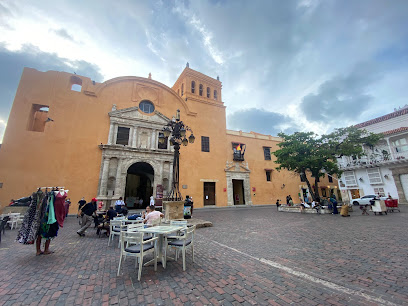
Mercado de Bazurto
Experience the vibrant culture and delicious flavors of Cartagena at Mercado de Bazurto, a must-visit market for every traveler.

Las Bóvedas
Explore Las Bóvedas in Cartagena, a historic site that combines stunning architecture with local artisan culture and breathtaking Caribbean views.

Plaza de Santa Teresa
Experience the vibrant culture and rich history at Plaza de Santa Teresa, a must-visit destination in Cartagena, Colombia.

Convent of Santa Cruz de la Popa
Discover the Convent of Santa Cruz de la Popa, Cartagena's iconic monastery, offering breathtaking views and rich history in Colombia.

Museum of Cartagena de Indias
Explore the rich tapestry of Cartagena's history at the Museum of Cartagena de Indias, a captivating destination for history lovers and cultural enthusiasts.

Centenario Park
Discover the charm of Centenario Park, a vibrant green space in Cartagena filled with cultural significance and a lively atmosphere.

Plaza de la Aduana
Explore the vibrant Plaza de la Aduana, a historic landmark in Cartagena, showcasing stunning architecture and a lively atmosphere perfect for tourists.

Plaza de Bolívar
Discover the vibrant Plaza de Bolívar in Cartagena - a historic plaza rich in culture, surrounded by stunning architecture and local flavor.

Unmissable attractions to see
San Felipe de Barajas Fort
Explore the historical marvel of San Felipe de Barajas Fort in Cartagena, a UNESCO World Heritage site showcasing Colombia's rich colonial past.

Oceanarium Rosario Islands
Explore the Oceanarium Rosario Islands and immerse yourself in the beauty of Colombia's marine biodiversity for an unforgettable experience.

Plaza de la Trinidad
Experience the vibrant atmosphere and rich history of Plaza de la Trinidad, a cultural gem in the heart of Cartagena's Getsemaní district.

Plaza de Santo Domingo
Experience the vibrant heart of Cartagena at Plaza de Santo Domingo, where history, culture, and culinary delights come together in a stunning setting.

Muelle de la Bodeguita
Discover the Muelle de la Bodeguita in Cartagena, a vibrant fishing pier, bursting with local culture, stunning views, and exciting maritime adventures.

Playa De Bocagrande
Experience the sun-kissed shores and vibrant culture of Playa De Bocagrande, Cartagena's premier beach destination for relaxation and adventure.
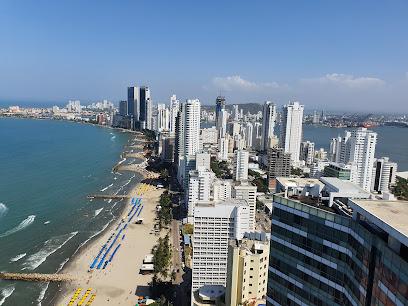
Sibarita del Mar
Discover the enchanting beauty of Cartagena's coast with Sibarita del Mar, offering unforgettable boat tours that blend adventure and local culture.

Letras de Cartagena
Explore the vibrant Letras de Cartagena, a colorful artistic landmark in Marbella that showcases the culture and spirit of this historic coastal city.
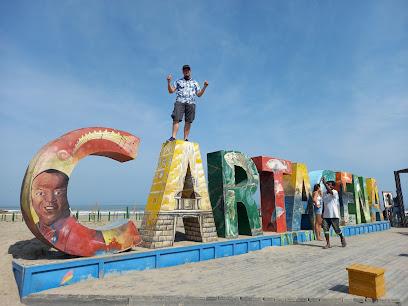
Centro de Convenciones Cartagena de Indias
Discover the vibrant Centro de Convenciones Cartagena de Indias, where modern facilities meet Cartagena's rich history and culture for unforgettable events.

Alquimico
Experience delicious cocktails and vibrant nightlife at Alquimico, a top bar in Cartagena's historic El Centro district, blending tradition with modern flair.

Convent of Santa Cruz de la Popa
Discover the tranquil beauty and historical significance of the Convent of Santa Cruz de la Popa in Cartagena, Colombia, a must-see for all travelers.

Playa Castillo Grande
Experience the beauty and vibrant atmosphere of Playa Castillo Grande, a must-visit beach destination in Cartagena, Colombia, perfect for relaxation and adventure.

Isla Punta Arena
Experience the stunning beauty and rich culture of Isla Punta Arena, a tropical paradise in Cartagena, Colombia, perfect for relaxation and adventure.
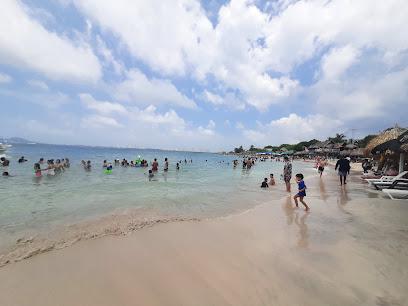
Museum of Cartagena de Indias
Explore Cartagena's fascinating past at the Museum of Cartagena de Indias, where history comes alive through captivating exhibits and rich cultural heritage.

Museo Naval del Caribe
Explore the captivating maritime history of Colombia at Museo Naval del Caribe in the heart of Cartagena, where the sea's legacy unfolds.

Essential places to dine
Café del Mar Ltda.
Experience breathtaking ocean views and vibrant nightlife at Café del Mar in Cartagena – where culinary delights meet stunning sunsets.

Restaurante San Valentin
Experience authentic Colombian cuisine at Restaurante San Valentin in Cartagena – where local flavors meet warm hospitality.

La Mulata
Experience the vibrant flavors of Caribbean and Colombian cuisine at La Mulata in Cartagena—an unforgettable dining destination.

Restaurante Candé
Experience exquisite Caribbean and Creole cuisine at Restaurante Candé in Cartagena - where fine dining meets authentic flavors.

EL BALUARTE SAN FRANCISCO JAVIER
Experience the perfect blend of history and cuisine at El Baluarte San Francisco Javier in Cartagena - where every bite tells a story.

Cuzco Cocina Peruana
Experience authentic Peruvian flavors at Cuzco Cocina Peruana in Cartagena - where every dish is a delightful journey into culinary tradition.

Cuba 1940 - Plaza San Diego
Discover the essence of Cuban cuisine at Cuba 1940 in Plaza San Diego, Cartagena – where flavors meet culture in an unforgettable dining experience.

Buena Vida Marisquería - Cartagena
Experience vibrant seafood dining in Cartagena at Buena Vida Marisquería, where fresh flavors meet Caribbean charm.

Restaurante-Bar San Nicolás
Savor authentic Colombian flavors in the heart of Getsemaní at Restaurante-Bar San Nicolás - where culinary tradition meets vibrant atmosphere.

Mistura Cartagena
Experience authentic Colombian cuisine at Mistura Cartagena - where tradition meets innovation in every flavorful dish.

Restaurante Celele
Experience authentic Caribbean cuisine at Restaurante Celele in Cartagena - where traditional flavors meet modern creativity.
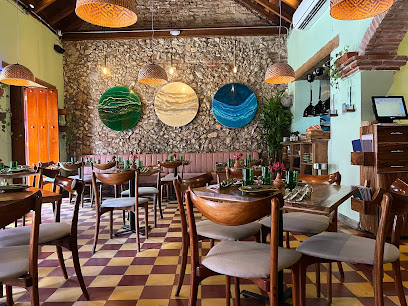
Restaurante Fuerte de San Sebastián del Pastelillo-Club de Pesca
Discover Caribbean culinary delights at Restaurante Fuerte de San Sebastián del Pastelillo in Cartagena with stunning views and exquisite flavors.

La Cevichería
Experience Cartagena's vibrant culinary scene at La Cevichería, where fresh seafood meets creative flair in every dish.

Restaurante Mar De Las Antillas
Discover the vibrant flavors of Colombia at Restaurante Mar De Las Antillas in Cartagena's lively Getsemaní district.
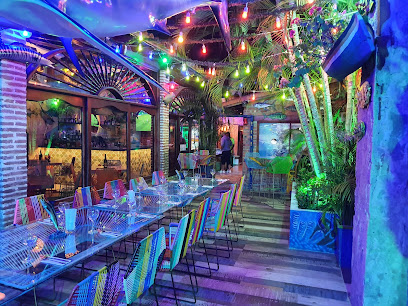
Carmen Cartagena
Discover Carmen Cartagena: Where traditional Colombian cuisine meets modern culinary artistry in a vibrant setting.

Markets, malls and hidden boutiques
Mallplaza Cartagena - El Castillo
Discover the vibrant shopping and dining experience at Mallplaza Cartagena - El Castillo, where local culture meets modern retail.

Caribe Plaza Centro Comercial
Discover the vibrant shopping and dining experience at Caribe Plaza Centro Comercial in Cartagena, where culture meets modern retail.

Bocagrande Plaza Mall
Experience shopping and dining at Bocagrande Plaza Mall, Cartagena's premier destination for vibrant retail and culinary delights.

MALL Paseo de la Castellana
Explore MALL Paseo de la Castellana in Cartagena for an unforgettable shopping and dining experience amidst vibrant local culture.

Éxito Castellana - Cartagena
Discover the vibrant shopping experience at Éxito Castellana in Cartagena, featuring fresh produce, local delicacies, and diverse retail options.

Multicentro La Plazuela
Discover a vibrant shopping experience at Multicentro La Plazuela in Cartagena, featuring a variety of stores, dining options, and entertainment for all.

Las Bóvedas
Explore Las Bóvedas in Cartagena: a historical site blending culture, craftsmanship, and stunning architecture.

Éxito Cartagena
Explore Éxito Cartagena, your ultimate shopping destination for fresh produce, local delicacies, and everyday essentials in the heart of Colombia's vibrant city.

Centro Comercial Nao
Experience the vibrant shopping and dining scene at Centro Comercial Nao, the ultimate destination for tourists in Cartagena.

Centro comercial San Fernando
Explore Centro Comercial San Fernando: A bustling shopping mall in Cartagena offering diverse retail, dining, and entertainment experiences.

Centro Comercial Centro Uno
Experience the lively shopping scene and delicious street food at Centro Comercial Centro Uno in vibrant Cartagena.

Centro Comercial Portal de San Felipe
Experience the vibrant shopping culture of Cartagena at Centro Comercial Portal de San Felipe, where local and international brands meet delicious dining.

Ábaco Libros y Café
Discover the charm of Ábaco Libros y Café, where literature meets coffee in the heart of Cartagena's vibrant cultural scene.
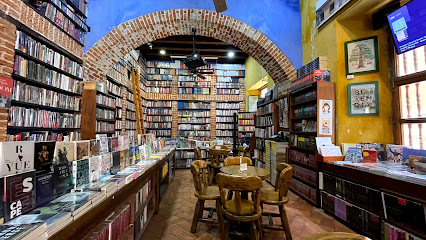
Ciudad Amurallada Cartagena
Explore the rich history and vibrant culture of Ciudad Amurallada Cartagena, a UNESCO World Heritage site filled with stunning architecture and lively atmosphere.

Falabella Mall Plaza El Castillo
Explore the bustling Falabella Mall Plaza El Castillo in Cartagena for a unique shopping and dining experience that captures the essence of Colombian culture.

Essential bars & hidden hideouts
Café del Mar Ltda.
Experience breathtaking ocean views and exquisite grill cuisine at Café del Mar, the ultimate coastal retreat in Cartagena.

Alquimico
Discover the vibrant cocktail scene at Alquimico, Cartagena's premier bar blending creativity and ambiance for an unforgettable night.

Mirador Gastro Bar
Experience the vibrant fusion of flavors and nightlife at Mirador Gastro Bar in the heart of Cartagena—your ultimate destination for brunch and cocktails.

Café Havana
Experience the vibrant nightlife at Café Havana, Cartagena's premier bar and disco club offering Caribbean cuisine and lively music.
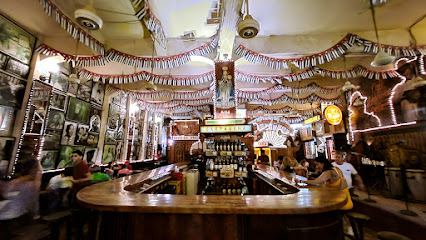
Donde Fidel Salsa Bar
Discover the lively spirit of Cartagena at Donde Fidel Salsa Bar, where vibrant salsa music and a welcoming atmosphere await every visitor.

The Clock Pub Cartagena
Experience the vibrant nightlife of Cartagena at The Clock Pub, where live music, delicious food, and great drinks come together in a lively atmosphere.

El Barón
Experience the vibrant nightlife of Cartagena at El Barón, where innovative cocktails meet a lively atmosphere and gourmet cuisine.

51 Sky Bar
Discover the vibrant nightlife at 51 Sky Bar, Cartagena's premier live music venue with stunning views and a lively atmosphere.
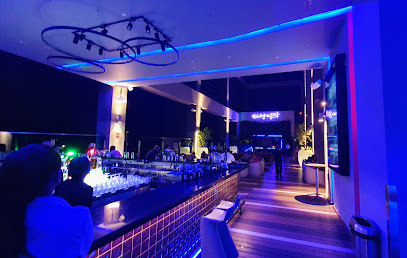
Beer Lovers Cartagena
Experience a vibrant atmosphere at Beer Lovers Cartagena, where international brews and local culture collide in the heart of Getsemaní.

Bar Tu Candela
Experience the vibrant nightlife at Bar Tu Candela in Cartagena, serving delicious burgers, pizzas, and refreshing drinks in a lively atmosphere.

Delirium Gastro Bar
Experience the vibrant nightlife at Delirium Gastro Bar in Cartagena, where great food, drinks, and dancing come together in a lively atmosphere.

Mondo Cocktail Bar
Discover Mondo Cocktail Bar in the heart of Cartagena, where innovative cocktails and a vibrant atmosphere create unforgettable experiences.

La Jugada Club House Gastrobar
Discover the lively nightlife at La Jugada Club House Gastrobar in Cartagena, where vibrant cocktails and dance meet delicious gastropub cuisine.

Monkey Bar
Experience the vibrant nightlife of Cartagena at Monkey Bar, where creative cocktails and lively music await in the heart of the historic district.

Skapate Hookah Bar
Discover the lively Skapate Hookah Bar in Cartagena, where music, dance, and flavorful hookah come together for an unforgettable nightlife experience.

Local Phrases
-
- HelloHola
[oh-lah] - GoodbyeAdiós
[ah-dee-ohs] - YesSí
[see] - NoNo
[no] - Please/You're welcomePor favor/De nada
[por fah-vor/deh nah-dah] - Thank youGracias
[grah-see-ahs] - Excuse me/SorryPerdón/Lo siento
[pair-dohn/loh see-ehn-toh] - How are you?¿Cómo estás?
[koh-moh ehs-tahs] - Fine. And you?Bien. ¿Y tú?
[bee-ehn. ee too] - Do you speak English?¿Hablas inglés?
[ah-blahs een-glehs] - I don't understandNo entiendo
[noh ehn-tee-ehn-doh]
- HelloHola
-
- I'd like to see the menu, pleaseMe gustaría ver el menú, por favor
[meh goo-stah-ree-ah behr ehl meh-noo, poor fah-vor] - I don't eat meatNo como carne
[noh koh-moh kahr-neh] - Cheers!¡Salud!
[sah-lood] - I would like to pay, pleaseMe gustaría pagar, por favor
[meh goo-stah-ree-ah pah-gahr, poor fah-vor]
- I'd like to see the menu, pleaseMe gustaría ver el menú, por favor
-
- Help!¡Ayuda!
[ah-yoo-dah] - Go away!¡Vete!
[veh-teh] - Call the Police!¡Llama a la policía!
[yah-mah ah lah poh-lee-see-ah] - Call a doctor!¡Llama a un médico!
[yah-mah ah oon meh-dee-koh] - I'm lostEstoy perdido
[ehs-toy pair-dee-doh] - I'm illEstoy enfermo
[ehs-toy ehn-fehr-moh]
- Help!¡Ayuda!
-
- I'd like to buy...Me gustaría comprar...
[meh goo-stah-ree-ah kohm-prahr...] - I'm just lookingSolo estoy mirando
[soh-loh ehs-toy mee-rahn-doh] - How much is it?¿Cuánto cuesta?
[kwan-toh kwehs-tah] - That's too expensiveEsto es demasiado caro
[ehs-toh ehs deh-mah-syah-doh kah-roh] - Can you lower the price?¿Puede bajar el precio?
[pweh-deh bah-hahr ehl pree-syoh]
- I'd like to buy...Me gustaría comprar...
-
- What time is it?¿Qué hora es?
[keh oh-rah ehs] - It's one o'clockEs la una
[ehs lah oo-nah] - Half past (10)Las diez y media
[lahs dee-ehs ee meh-dee-ah] - MorningMañana
[mah-nyah-nah] - AfternoonTarde
[tahr-deh] - EveningNoche
[noh-cheh] - YesterdayAyer
[ah-yehr] - TodayHoy
[oy] - TomorrowMañana
[mah-nyah-nah] - 1Uno
[oo-noh] - 2Dos
[dohs] - 3Tres
[trehs] - 4Cuatro
[kwah-troh] - 5Cinco
[seen-koh] - 6Seis
[sace] - 7Siete
[see-eh-teh] - 8Ocho
[oh-choh] - 9Nueve
[nweh-veh] - 10Diez
[dee-ehs]
- What time is it?¿Qué hora es?
-
- Where's a/the...?¿Dónde está...?
[dohn-deh ehs-tah] - What's the address?¿Cuál es la dirección?
[kwahl ehs lah dee-rehk-syohn] - Can you show me (on the map)?¿Puedes mostrarme (en el mapa)?
[pweh-dehs mohs-trahr-meh (ehn ehl mah-pah)] - When's the next (bus)?¿Cuándo es el próximo (autobús)?
[kwan-doh ehs ehl proh-ksy-moh (ow-toh-boos)] - A ticket (to ....)Un boleto (a ....)
[oon boh-leh-toh (ah ....)]
- Where's a/the...?¿Dónde está...?
History of Cartagena
-
Cartagena was founded on June 1, 1533, by Spanish commander Pedro de Heredia. The city was named after Cartagena, Spain, and quickly became a significant port for the Spanish empire. Its strategic location made it a vital hub for trade and military operations in the Caribbean.
-
During the 16th and 17th centuries, Cartagena became one of the wealthiest ports in the New World due to the booming trade in gold, silver, and other valuable resources. To protect against frequent pirate attacks, the Spanish Crown invested heavily in fortifications. The most prominent of these is the Castillo San Felipe de Barajas, an impressive fortress that stands to this day.
-
In 1610, Cartagena became one of the three seats of the Spanish Inquisition in the Americas. The Palace of the Inquisition, now a museum, was established to try cases of heresy, sorcery, and other crimes against the Catholic faith. This period left a dark yet significant mark on the city's history.
-
Cartagena played a crucial role in Colombia's fight for independence from Spanish rule. On November 11, 1811, Cartagena declared its independence, becoming one of the first cities in Colombia to do so. This act of defiance was a major milestone in the country's journey toward freedom.
-
In 1741, Cartagena was the site of a major battle between the British and Spanish empires. Under the leadership of Admiral Edward Vernon, the British launched a massive attack on the city, but the Spanish forces, commanded by Blas de Lezo, successfully defended Cartagena. This victory solidified Spain's dominance in the Caribbean.
-
Today, Cartagena is a vibrant city that blends its rich historical heritage with modern culture. The city's old town, a UNESCO World Heritage Site, is a labyrinth of cobblestone streets, colonial architecture, and colorful buildings. Cartagena's unique blend of history, culture, and natural beauty continues to attract visitors from around the world.
Cartagena Essentials
-
Cartagena is served by Rafael Núñez International Airport (CTG), located about 4 kilometers from the historic city center. The airport offers direct flights from major cities in North and South America. From the airport, you can take a taxi or a pre-arranged shuttle to your accommodation. For those arriving by bus, Cartagena's main bus terminal is located approximately 11 kilometers from the city center and is well connected to other major Colombian cities.
-
Cartagena has various transportation options, including taxis, buses, and bike rentals. Taxis are plentiful and relatively inexpensive but ensure the meter is used or agree on a fare beforehand. Public buses and small vans (colectivos) are available for travel within the city and to surrounding areas. For a more eco-friendly option, consider renting a bicycle to explore the historic walled city and its surroundings. Ride-sharing apps like Uber are also available.
-
The official currency in Colombia is the Colombian Peso (COP). Credit and debit cards are widely accepted in hotels, restaurants, and larger shops, but it's advisable to carry cash for smaller establishments and street vendors. ATMs are readily available throughout Cartagena, especially in tourist areas. Be cautious when withdrawing cash and avoid using ATMs at night or in secluded areas.
-
Cartagena is generally safe for tourists, but it's essential to take standard precautions. Avoid walking alone at night, especially in less crowded areas. Be cautious of pickpockets in busy places like markets and tourist attractions. Areas such as the neighborhoods of La Popa and parts of the outskirts can have higher crime rates. Stick to well-traveled areas and use reputable transportation services. Always keep an eye on your belongings and avoid displaying valuables.
-
In case of emergency, dial 123 for police, medical, or fire assistance. The main hospital in Cartagena is Hospital Universitario del Caribe, which provides comprehensive medical services. It's advisable to have travel insurance that covers medical emergencies. For minor health issues, numerous pharmacies (farmacias) are available throughout the city, often providing over-the-counter medications.
-
Fashion: Do dress comfortably and appropriately for the tropical climate. Lightweight clothing and sun protection are essential. Avoid overly revealing outfits, especially in religious sites. Religion: Do respect local customs and traditions. When visiting churches, dress modestly and keep noise to a minimum. Public Transport: Do be respectful and patient. Keep personal belongings secure and avoid eating or drinking on buses. Greetings: Do greet people with a handshake or a friendly 'Hola.' Colombians are generally warm and polite. Eating & Drinking: Do try local dishes and accept food and drink offerings graciously. Don’t refuse hospitality, as it may be considered impolite.
-
To experience Cartagena like a local, visit the Getsemaní neighborhood, known for its vibrant street art and local eateries. Enjoy a sunset at Café del Mar on the city walls. Engage with locals at Mercado de Bazurto, the bustling central market, for an authentic experience. Take a Chiva bus tour for a lively and musical way to see the city. Don’t miss trying local delicacies like arepas, ceviche, and fresh tropical fruits.
Trending Landmark in Cartagena
-
San Felipe de Barajas Fort
-
Walls of Cartagena
-
Monumento Torre del Reloj
-
Las Botas Viejas
-
Monumento India Catalina
-
Plaza de la Trinidad
-
Plaza de Santo Domingo
-
Mercado de Bazurto
-
Las Bóvedas
-
Plaza de Santa Teresa
-
Convent of Santa Cruz de la Popa
-
Museum of Cartagena de Indias
-
Centenario Park
-
Plaza de la Aduana
-
Plaza de Bolívar
Nearby Cities to Cartagena
-
Things To Do in Barranquilla
-
Things To Do in Sincelejo
-
Things To Do in Santa Marta
-
Things To Do in Riohacha
-
Things To Do in San Blas Islands
-
Things To Do in Cúcuta
-
Things To Do in Medellín
-
Things To Do in Portobelo
-
Things To Do in Panama City
-
Things To Do in Colon
-
Things To Do in Tunja
-
Things To Do in Manizales
-
Things To Do in Las Tablas
-
Things To Do in Chitre
-
Things To Do in Pereira


















